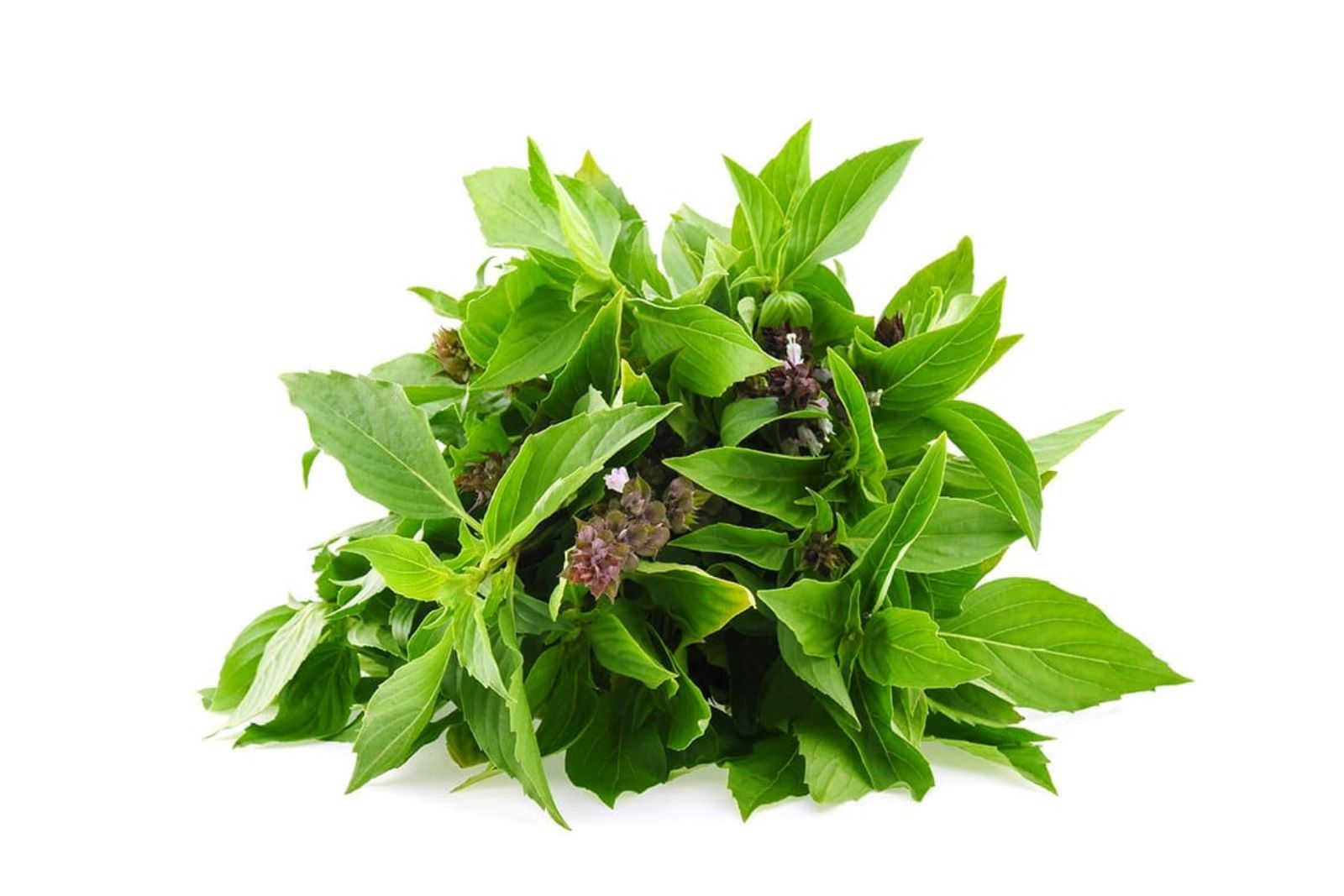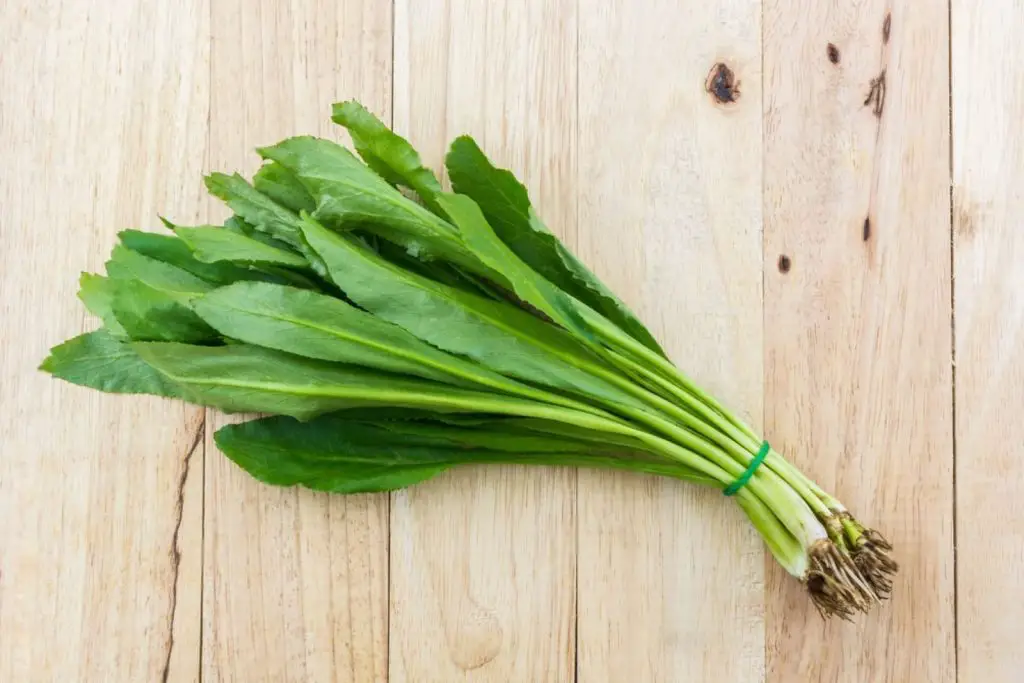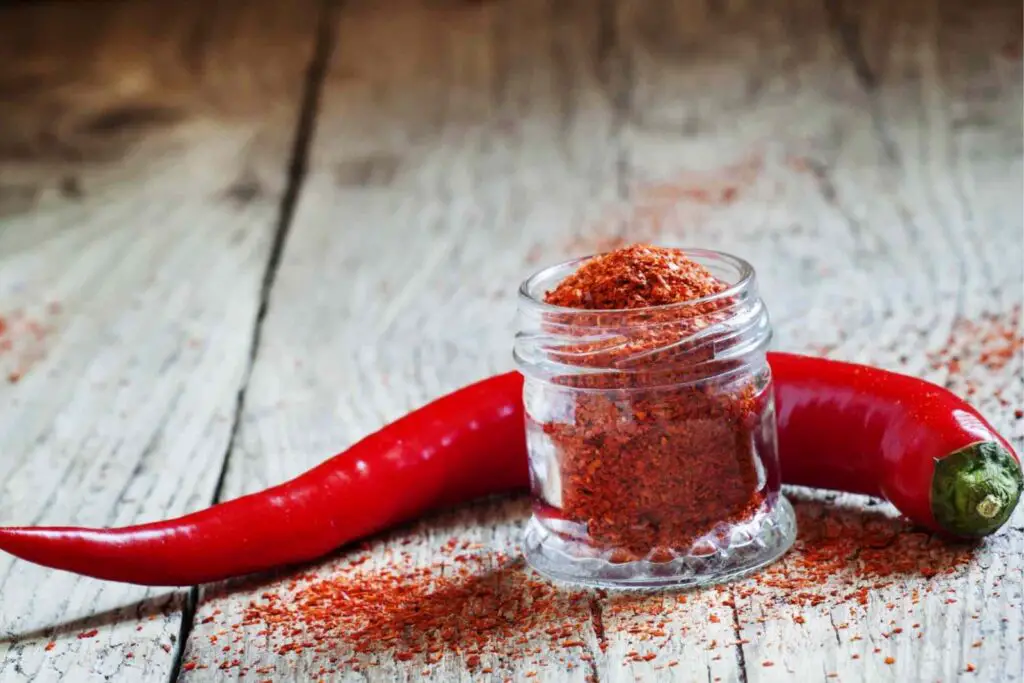
Thai basil, also known as “holy basil” or “tulsi,” is a fragrant herb widely used in Thai and other Southeast Asian cuisines. Its aromatic leaves are prized for their unique flavor, which is a combination of sweet, spicy, and licorice-like notes. Whether you have a thriving Thai basil plant in your garden or you’ve picked up a bunch from the market, freezing Thai basil leaves is a great way to preserve their vibrant taste and aroma. This article will guide you through the steps to freeze Thai basil leaves properly, ensuring you can enjoy their delightful essence in your dishes year-round.
Here’s a step-by-step guide on how to freeze Thai basil leaves:
- Step 1: Harvest fresh Thai basil leaves
- Step 2: Wash and dry the leaves
- Step 3: Separate the leaves from the stems
- Step 4: Portion the leaves
- Step 5: Arrange the leaves for freezing
- Step 6: Flash-freeze the Thai basil leaves
- Step 7: Package and seal the Thai basil leaves
- Step 8: Label and date the packages
- Step 9: Store in the freezer
Step 1: Harvest fresh Thai basil leaves
Harvesting fresh Thai basil leaves is the initial and most crucial step in the process of freezing them. The quality of the basil leaves you start with greatly impacts the flavor and aroma you’ll enjoy in your dishes after thawing. Here’s why this step is so important:
- Flavor Preservation: Thai basil is renowned for its unique and robust flavor profile, featuring sweet, spicy, and licorice-like notes. To preserve these distinctive flavors, you must begin with fresh leaves. Fresh leaves will have the most intense and true-to-type taste.
- Aroma Retention: Thai basil is equally prized for its delightful aroma, which is a key component of many Southeast Asian dishes. Fresher leaves contain higher concentrations of aromatic compounds, ensuring that your frozen basil retains its captivating fragrance.
- Texture and Appearance: Fresh basil leaves are plump, firm, and vibrant green. They have a crisp texture that contributes to the overall appeal of your dishes. Leaves that are past their prime may be wilted, yellowed, or have damaged areas, affecting both the visual and textural qualities of the basil.
Here’s how to ensure you have the freshest Thai basil leaves:
- Homegrown Basil: If you’re fortunate enough to have your own Thai basil plant, pick the leaves just before you plan to freeze them. Harvesting them at the last moment ensures maximum freshness.
- Market or Store-Bought Basil: When purchasing Thai basil from a store or farmer’s market, inspect the leaves carefully. Choose bunches or packages with vibrant green leaves that are free from any wilting, yellowing, or bruising. Check the stems as well; they should look sturdy and healthy.
Step 2: Wash and dry the leaves
Now that you’ve secured a batch of fresh Thai basil leaves, the next critical step in the process of freezing them is to wash and thoroughly dry the leaves. Here’s why this step is essential:
- Dirt and Debris Removal: Thai basil leaves, like many leafy greens, can accumulate dirt, dust, or other contaminants during growth and harvesting. Washing the leaves under cold running water helps remove these impurities, ensuring that the basil you freeze is clean and safe to eat.
- Preventing Microbial Growth: Washing the leaves also helps eliminate any potential microbes or pathogens that may be present on the surface. This step is especially important if you’ve grown the basil in your garden, where it may be exposed to various environmental factors.
- Ice Crystal Prevention: Ensuring that the basil leaves are completely dry is crucial to prevent the formation of ice crystals during freezing. When water freezes, it can expand and damage the cellular structure of the leaves. This can lead to a loss of flavor and result in a soggy texture when you thaw the basil later.
Here’s how to wash and dry Thai basil leaves effectively:
- Rinse Under Cold Water: Hold the basil leaves under cold running water, gently swishing them around to remove any dirt or contaminants. Be gentle to avoid damaging the delicate leaves.
- Shake Off Excess Water: After rinsing, give the leaves a gentle shake to remove as much water as possible.
- Pat Dry: To ensure thorough drying, lay the basil leaves on a clean kitchen towel and pat them dry with another towel or paper towels. Avoid rubbing the leaves vigorously, as this can bruise them.
- Air Drying: An alternative method is to place the washed leaves on a clean kitchen towel or paper towels and allow them to air dry for some time. Ensure they are completely dry before proceeding to the next steps.
Step 3: Separate the leaves from the stems
As you progress in your journey to freeze Thai basil leaves, the next crucial step is to separate the leaves from the stems. Thai basil, like many other herbs, features tender stems with leaves attached. Here’s why you should take the time to perform this step:
- Texture and Flavor Enhancement: While the stems of Thai basil are edible and can impart a mild basil flavor, they have a more robust and slightly bitter taste compared to the leaves. By removing the stems, you can focus on preserving the leaves’ delicate and aromatic qualities, ensuring that your frozen basil maintains its distinct Thai basil flavor.
- Versatile Use: Separating the leaves from the stems provides versatility in how you use your frozen Thai basil leaves in future recipes. Without the stems, the leaves are more convenient to work with and can be used directly in various dishes, such as curries, stir-fries, salads, and more.
- Stem Utilization: Don’t let the separated stems go to waste. While they may not be ideal for freezing with the leaves, they can still be put to good use. Consider saving them for flavoring stocks, soups, or even infusing beverages like herbal tea. Thai basil stems can impart a delightful aroma and taste to these culinary creations.
Here’s a simple method for separating the leaves from the stems:
- Hold the Stem: Take a Thai basil stem in one hand, positioning it near the base where the leaves are attached.
- Slide Off the Leaves: Using your other hand, gently slide your fingers along the stem from the base towards the tip. The leaves should easily come away from the stem as you do this.
- Discard or Save the Stems: Once you’ve removed the leaves, you can discard the stems if you don’t plan to use them in other recipes. Alternatively, save them for additional culinary applications as mentioned above.
Step 4: Portion the leaves
As you move forward with freezing Thai basil leaves, it’s important to think about how you plan to use them in your future culinary endeavors. This step involves considering the quantities in which you typically use Thai basil and portioning the leaves accordingly. Here’s why this step is significant:
- Convenience in Cooking: Portioning the Thai basil leaves allows you to have ready-to-use quantities on hand, making meal preparation more efficient. It eliminates the need to defrost an entire batch when you only require a small amount for a specific recipe.
- Consistent Flavor: Portioning ensures that you can maintain consistent flavors in your dishes. You can control the amount of Thai basil you add, ensuring that your meals have the desired level of basil’s unique sweet, spicy, and licorice-like notes.
- Versatility: Depending on your cooking habits, you can choose to portion the Thai basil leaves into smaller quantities for individual dishes or freeze them as whole leaves for recipes that require larger amounts. This flexibility caters to a variety of culinary needs.
Here’s how to effectively portion Thai basil leaves for freezing:
- Consider Your Usage: Think about the recipes you commonly prepare that require Thai basil. Do you often use a handful of leaves in stir-fries, curries, or salads? Or do you frequently require larger quantities for making Thai basil-infused sauces or pesto?
- Divide Accordingly: Based on your assessment, divide the Thai basil leaves into portions that align with your typical usage. Small portions can be ideal for everyday cooking, while larger ones may suit recipes that call for substantial amounts of basil.
- Packaging Choices: Use freezer-safe containers or resealable plastic bags to store the portioned leaves. Consider placing similar-sized portions in individual bags or containers for added convenience.
Can I freeze Thai basil leaves in ice cube trays?
Yes, you can freeze Thai basil leaves in ice cube trays. This method involves placing individual basil leaves or chopped leaves into the compartments of an ice cube tray. You can then add a small amount of water or olive oil to each compartment to cover the basil. Once frozen, the basil cubes can be removed and stored in a freezer bag, making it convenient to add Thai basil to your recipes in controlled portions. This approach is particularly useful if you want to preserve the basil’s freshness for longer periods.
Step 5: Arrange the leaves for freezing
Once you’ve portioned your Thai basil leaves according to your cooking needs, the next crucial step is to arrange them for freezing. This involves laying out the leaves on a baking sheet in a single layer. Here’s why this step is essential and what it accomplishes:
- Flash Freezing: Flash freezing is the process of quickly freezing individual items separately before packing them together. It is crucial because it prevents the leaves from clumping together when frozen, which can make it challenging to use only the desired amount later. Flash freezing preserves the individual integrity of each leaf.
- Preventing Stickiness: Basil leaves contain moisture, and if they come into contact with each other during freezing, they can stick together. Arranging them in a single layer ensures they freeze separately, reducing the risk of sticking and making it easier to retrieve the desired amount when needed.
- Preserving Freshness: Flash freezing allows the leaves to freeze rapidly, locking in their freshness. This rapid freezing minimizes the formation of ice crystals, which can compromise the texture and flavor of the basil.
Here’s how to arrange the Thai basil leaves for freezing:
- Prepare a Baking Sheet: Line a clean baking sheet with parchment paper or a silicone baking mat. This will prevent the basil leaves from sticking to the sheet.
- Lay Out the Leaves: Place the individual basil leaves on the prepared baking sheet in a single layer. Ensure that the leaves are not touching each other. You can slightly overlap them if necessary, but avoid any significant contact.
- Avoid Crowding: Depending on the quantity of basil leaves you’re freezing, you may need to use multiple baking sheets to prevent overcrowding. Crowding can lead to uneven freezing and sticking.
- Place in the Freezer: Carefully transfer the baking sheet(s) with the arranged basil leaves to the freezer. Make sure they are on a flat surface to prevent any bending or curling of the leaves during freezing.
- Monitor Freezing Time: The exact freezing time can vary depending on your freezer’s temperature, but typically, it takes a few hours for the basil leaves to freeze completely.
Step 6: Flash-freeze the Thai basil leaves
Once you have arranged the Thai basil leaves on a baking sheet in a single layer, the next crucial step is to flash-freeze them. Flash freezing is a rapid freezing process that helps maintain the quality of the leaves by preserving their natural flavors and preventing the formation of ice crystals. Here’s why this step is so important:
- Preservation of Flavor and Aroma: Flash freezing locks in the natural flavors and aromatic compounds present in the Thai basil leaves. By freezing them quickly, you retain the essence of the herb, ensuring that it imparts its unique sweet, spicy, and licorice-like notes to your dishes when you use it later.
- Texture Maintenance: Rapid freezing minimizes the formation of large ice crystals within the basil leaves. Large ice crystals can rupture cell walls, resulting in a loss of texture and making the leaves wilt or become soggy when thawed. Flash freezing helps maintain the leaves’ desirable texture.
- Preventing Clumping: Flash freezing also prevents the leaves from sticking together. When basil leaves are frozen individually, they can be easily separated, allowing you to use only the amount you need without thawing the entire batch.
Here’s how to flash-freeze the Thai basil leaves effectively:
- Prepared Basil Leaves: Ensure that the Thai basil leaves are arranged in a single layer on a baking sheet, as mentioned in the previous step.
- Freezer Placement: Carefully place the baking sheet with the arranged basil leaves in the freezer. Make sure the sheet is on a flat, level surface to prevent any disturbance during the freezing process.
- Monitor Freezing Time: The exact freezing time may vary depending on the temperature of your freezer and the quantity of basil leaves you are freezing. Typically, it takes a few hours for the leaves to freeze completely. You’ll know they are ready when they are frozen solid and firm to the touch.
- Quick Retrieval: Once the basil leaves are frozen solid, promptly remove the baking sheet from the freezer. This ensures that they remain at their peak quality.
Step 7: Package and seal the Thai basil leaves
After successfully flash-freezing your Thai basil leaves, the next critical step is to package and seal them for long-term storage in the freezer. Proper packaging is essential to protect the basil from freezer burn and to maintain its freshness. Here’s why this step is crucial:
- Freezer Burn Prevention: Freezer burn occurs when food is exposed to air in the freezer. It can lead to the dehydration and oxidation of the food, resulting in changes in flavor, texture, and overall quality. Packaging the Thai basil leaves airtight prevents freezer burn.
- Flavor and Aroma Preservation: Airtight packaging also ensures that the frozen basil retains its vibrant flavors and aromatic qualities. It safeguards the basil from absorbing odors and flavors from other items in the freezer.
- Long-Term Storage: Properly sealed packaging extends the shelf life of the Thai basil leaves. It allows you to store them for an extended period, so you can enjoy the herb’s fresh taste year-round.
Here’s how to package and seal the Thai basil leaves effectively:
- Use Airtight Containers: Transfer the frozen basil leaves to airtight, freezer-safe containers. These containers should have a secure seal to prevent air from entering. You can use glass containers with tight-fitting lids, plastic containers with sealing gaskets, or other suitable options.
- Resealable Plastic Bags: Alternatively, you can use resealable plastic bags designed for freezer use. Place the frozen leaves in the bags, press out as much air as possible, and then seal the bags securely.
- Vacuum Sealing: For extra protection, you can vacuum-seal the Thai basil leaves using a vacuum sealer machine. This method removes virtually all the air from the packaging, ensuring the leaves are well-preserved.
Step 8: Label and date the packages
As you complete the packaging and sealing of your Thai basil leaves for freezing, the next critical step is to label and date the containers or bags. This simple yet vital step plays a crucial role in ensuring the quality and safety of your frozen basil leaves. Here’s why it’s essential:
- Freshness Tracking: Labeling your packages with the date of freezing allows you to keep track of how long the basil leaves have been in the freezer. This information is invaluable in maintaining freshness and flavor.
- Expiration Awareness: By dating the packages, you’ll be aware of when the Thai basil leaves should be used by. Herbs, even when frozen, can gradually lose their flavor and aroma over time. Knowing the date helps you prioritize the use of older packages and ensures you enjoy the best quality.
- Portion Control: Mentioning the quantity of Thai basil leaves in each package is convenient for portion control. It makes it easier to select the right amount for your recipes without having to thaw more basil than necessary.
Here’s how to label and date your Thai basil leaf packages effectively:
- Use a Permanent Marker: Select a permanent marker with a fine tip for clear and long-lasting labeling. Write the date of freezing in a visible location on the container or bag.
- Note the Quantity: Additionally, if you’ve portioned the basil leaves into specific quantities, make sure to include this information on the package. For example, if you’ve portioned them into one-cup servings, label each package accordingly.
- Use Labels or Stickers: If you prefer a neater and more organized labeling approach, you can affix adhesive labels or stickers to the containers or bags. Write the date and quantity information on the labels.
- Keep It Visible: Ensure that the labeling is clear and easily visible. This makes it easy to identify packages at a glance without having to open them.
Step 9: Store in the freezer
After you’ve completed all the necessary steps for freezing Thai basil leaves, the final and crucial step is to store them properly in the freezer. How you store your frozen basil leaves can significantly impact their long-term quality and usability. Here’s why this step is essential:
- Maintaining Quality: Storing the Thai basil leaves in the freezer at a consistent temperature helps maintain their flavor, aroma, and texture. A stable freezing environment prevents temperature fluctuations that can lead to freezer burn or quality degradation.
- Extended Shelf Life: Proper freezer storage allows you to extend the shelf life of your frozen Thai basil leaves. While they will remain safe to eat for a more extended period, it’s advisable to use them within six months to ensure the best flavor and quality.
Here’s how to store your frozen Thai basil leaves effectively:
- Choose the Coldest Part: Place the labeled and sealed containers or bags containing the Thai basil leaves in the coldest part of your freezer. This is typically at the back or on a designated freezer shelf. Consistent, low temperatures are essential for preserving the basil’s quality.
- Avoid Frequent Thawing and Refreezing: Minimize the frequency of thawing and refreezing. When you need basil for a recipe, try to remove only the amount you intend to use, leaving the rest undisturbed in the freezer. Frequent temperature fluctuations can affect the quality of the basil leaves.
- Monitor the Use-By Date: While frozen Thai basil leaves can be stored for up to six months without significant quality loss, it’s a good practice to use them within this time frame. The flavor and aroma may gradually diminish over time, so fresh basil leaves are ideal for achieving the best results in your dishes.
Other related questions
How do I defrost Thai basil leaves?
To defrost Thai basil leaves, remove the desired quantity from the freezer and place them in an airtight container or resealable plastic bag. Store the container or bag in the refrigerator for several hours or overnight to allow gradual thawing. Avoid exposing the basil to room temperature or microwaving it, as this can compromise its texture and flavor.
Can I use frozen Thai basil leaves in recipes without thawing them first?
Yes, you can use frozen Thai basil leaves in recipes without the need to thaw them first. The delicate leaves will quickly wilt and release their flavor when added directly to hot, cooked dishes like stir-fries, soups, and curries. This convenience makes frozen Thai basil leaves a practical addition to various culinary creations.
Can I refreeze Thai basil leaves?
Refreezing Thai basil leaves is not recommended. When herbs like Thai basil are thawed, they undergo changes in texture and flavor due to the breakdown of cell structures and moisture loss. Once herbs have been thawed, their quality may deteriorate, so it’s best to use them promptly rather than refreezing them.
How do I know if the Thai basil leaves have gone bad after being frozen?
Frozen Thai basil leaves can go bad if they exhibit signs of freezer burn, such as dry, discolored, or shriveled leaves. Additionally, if they develop an off-putting odor or taste, discard them. Proper storage and adherence to the recommended storage duration of up to six months can help maintain their quality.
Can I freeze Thai basil leaves with other herbs or ingredients?
It’s generally advisable not to freeze Thai basil leaves with other herbs or ingredients. Freezing them separately helps maintain their distinct aroma and taste, preventing them from absorbing unwanted flavors. Flash freezing the leaves individually on a baking sheet before packaging ensures that they remain distinct and versatile for use in various recipes.
Can I use frozen Thai basil leaves for making pesto or sauces?
Absolutely! You can use frozen Thai basil leaves in recipes like pesto or sauces. Simply blend them while still frozen to create a flavorful sauce. However, for garnishes or salads, it’s best to use fresh Thai basil.
Should I blanch Thai basil leaves before freezing them?
No, blanching is not necessary for Thai basil leaves before freezing. The blanching process is typically used for vegetables to preserve their color and texture, but basil leaves are best frozen fresh.
Is it possible to freeze Thai basil in oil or water for later use?
Yes, it is possible to freeze Thai basil in oil or water for later use. One method involves chopping or blending the basil leaves and mixing them with olive oil or water. This mixture can be portioned into ice cube trays and frozen for convenient, small quantities of Thai basil to add to dishes. Another method is to layer whole basil leaves in an ice cube tray, cover them with water, and freeze. These basil cubes can be easily popped out and used in soups or stews.








